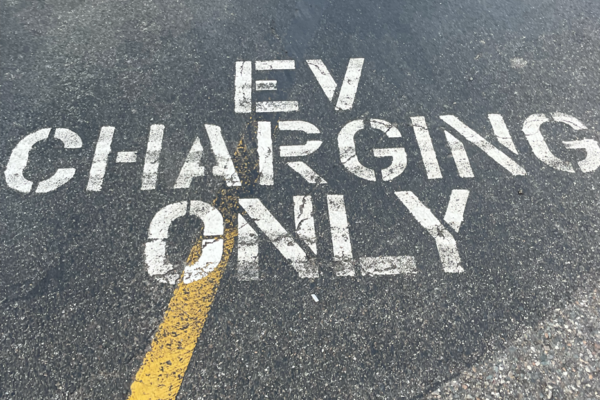Article created for the January digital issue of
As the number of electric vehicles on the road increases, more and more truck stops and travel centers are adding or planning to add electric vehicle (EV) chargers. However, there are still several unknowns in terms of how chargers will ultimately connect to a location’s point-of-sale system.
“It is sort of the wild, wild west,” said Brad McGuinness, senior vice president, point-of-sale solutions for PDI Technologies. “We’re at the precipice right now, and there is a lot of different charging equipment and there are no standards that I’ve seen to say how I interface from a charger to a POS.”
Type of Integration Needed Depends
The type of integration needed depends on the location’s situation. “If an operator leases their lot to a provider, they won’t realize revenue from charging session sales, making point-of-sale integration unnecessary,” Michael Hughes, chief revenue officer of ChargePoint said. “ChargePoint typically works with operators who want to own their stations, so we manage their transactions and remit payment to them monthly.”
Hughes said there are other options for further integration to operators’ existing point-of-sale through APIs. “ChargePoint partners work with us on extensive API integrations, while others allow us to process and remit payments to them monthly,” he said.
Monica deLaGarza, vice president of marketing and communications for Impower Connection, said the plus side is that operators have flexibility in using a variety of chargers rather than being locked into simply one brand because it interacts with an existing system.
“There are a variety of EV charging POS systems that operate as open-source code and can be used a variety of hardware that work with open-source software,” deLaGarza said, adding that some chargers have card readers, accept RFID cards, have payment through apps or can be paid for in cash in store. “EV charging platforms are striving to work with a variety of payment types.”
Payment Options
Chad Bass, director of product management for electric vehicle charging, Dover Fueling Solutions, said the basic way to activate a charger is a credit card. “The difficult piece is the storefronts want additional information. They want to be able to add loyalty programs on top of it, which is difficult if people swipe their credit card and leave,” he said.
Bass said the next phase will be RFID payments with companies distributing RFID cards. “You can either bill the customer, or some companies are toying with the idea of charging customers once a month,” he said.
McGuinness said it takes a lot of momentum to get a standard when it comes to the point of sale, and the challenge with EVs is “the cart has already left the barn.” However, he does equate the addition of EV chargers to when propane sales grew. “It started as a separate pump, and you turned it on and off. The next thing you know, the electronics catch up to where you can have interfaces and, better yet, it can be the same interface as other dispensers,” he said.
Many of the major fueling dispenser companies today have EV subsidiaries. “I think that is where you’ll start to see the convergence,” McGuinness said. “From our perspective as a point-of-sale provider, we have a POS that can interface with any types of gas pumps or tanks in the ground. Here is a new one but there isn’t an interface yet but there is a reason.”
Part of the current challenge is that there are a variety of pricing models, and they can fluctuate based on grid demand, time of day, tariffs, connection fees and idling fees, deLaGarza said.
Bass said requirements often vary based on state requirements. “Some states require you to do per minute. Others let you charge per kilowatt hour,” he said.
// This article was created for Stop Watch magazine, the magazine of the NATSO Foundation. The NATSO Foundation is the research, education and public outreach subsidiary of NATSO, Inc. The NATSO Foundation provides programs and products to strengthen travel plazas’ ability to meet the traveling public's needs through improved operational performance and business planning. Visit www.natsofoundation.org for more information. (Donate to the NATSO Foundation here.)
Subscribe to Updates
NATSO provides a breadth of information created to strengthen travel plazas’ ability to meet the needs of the travelling public in an age of disruption. This includes knowledge filled blog posts, articles and publications. If you would like to receive a digest of blog post and articles directly in your inbox, please provide your name, email and the frequency of the updates you want to receive the email digest.



